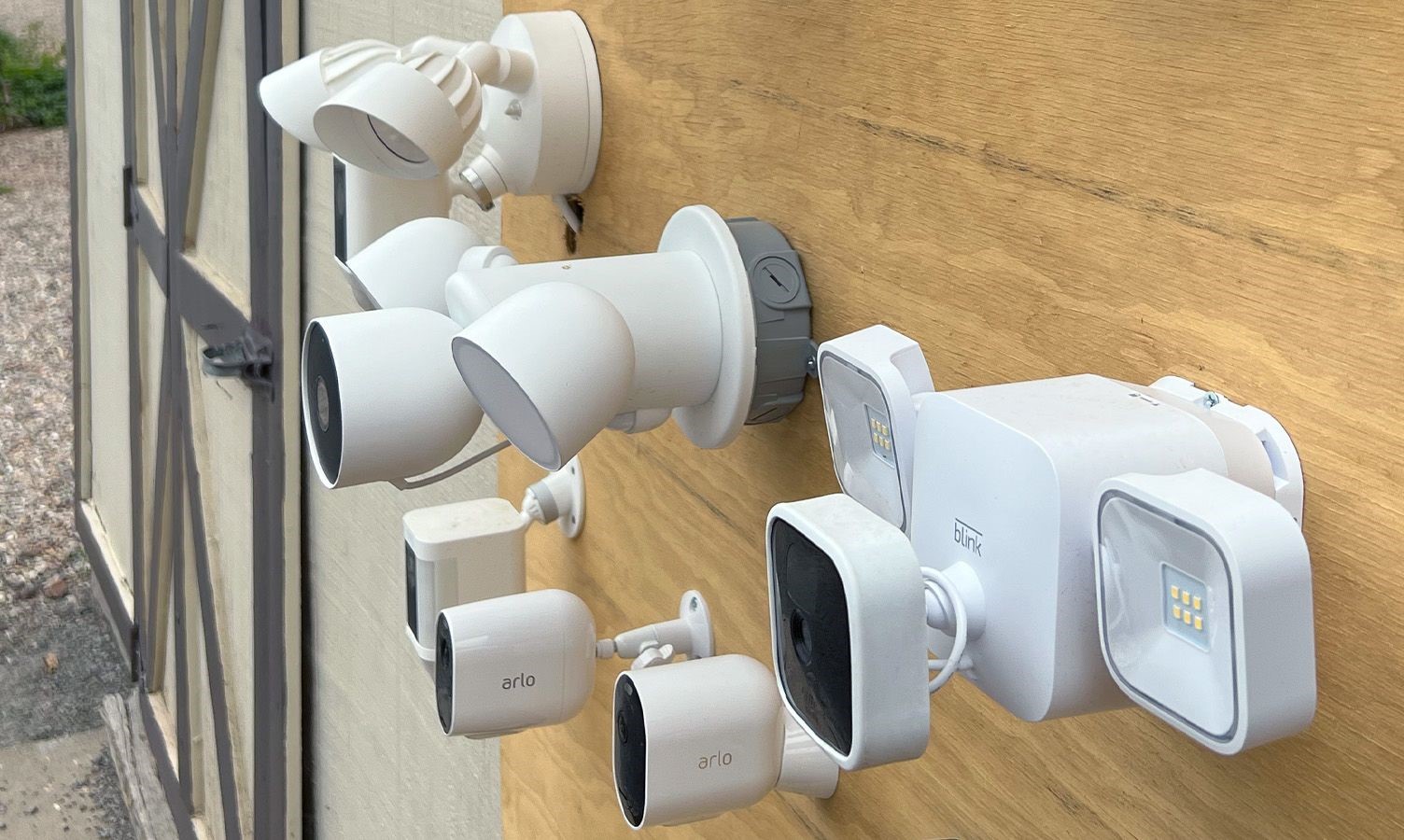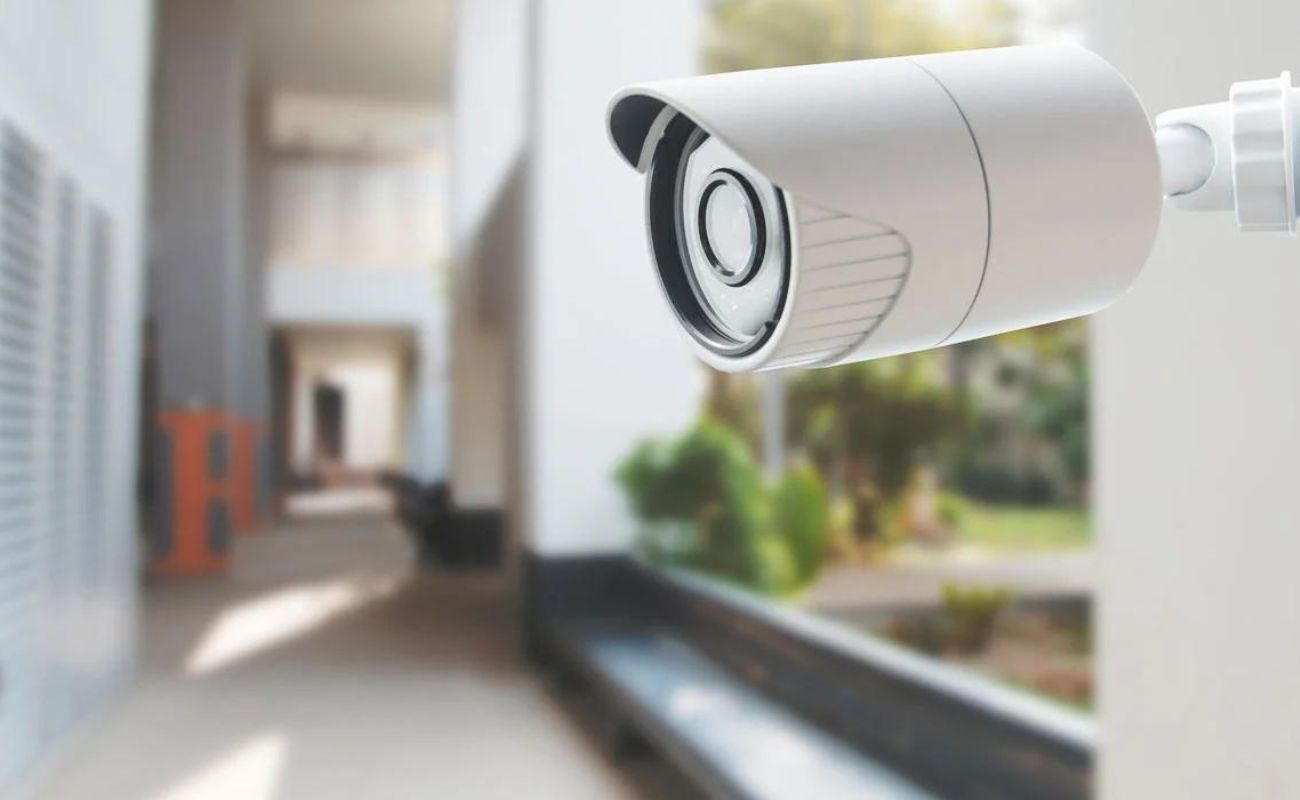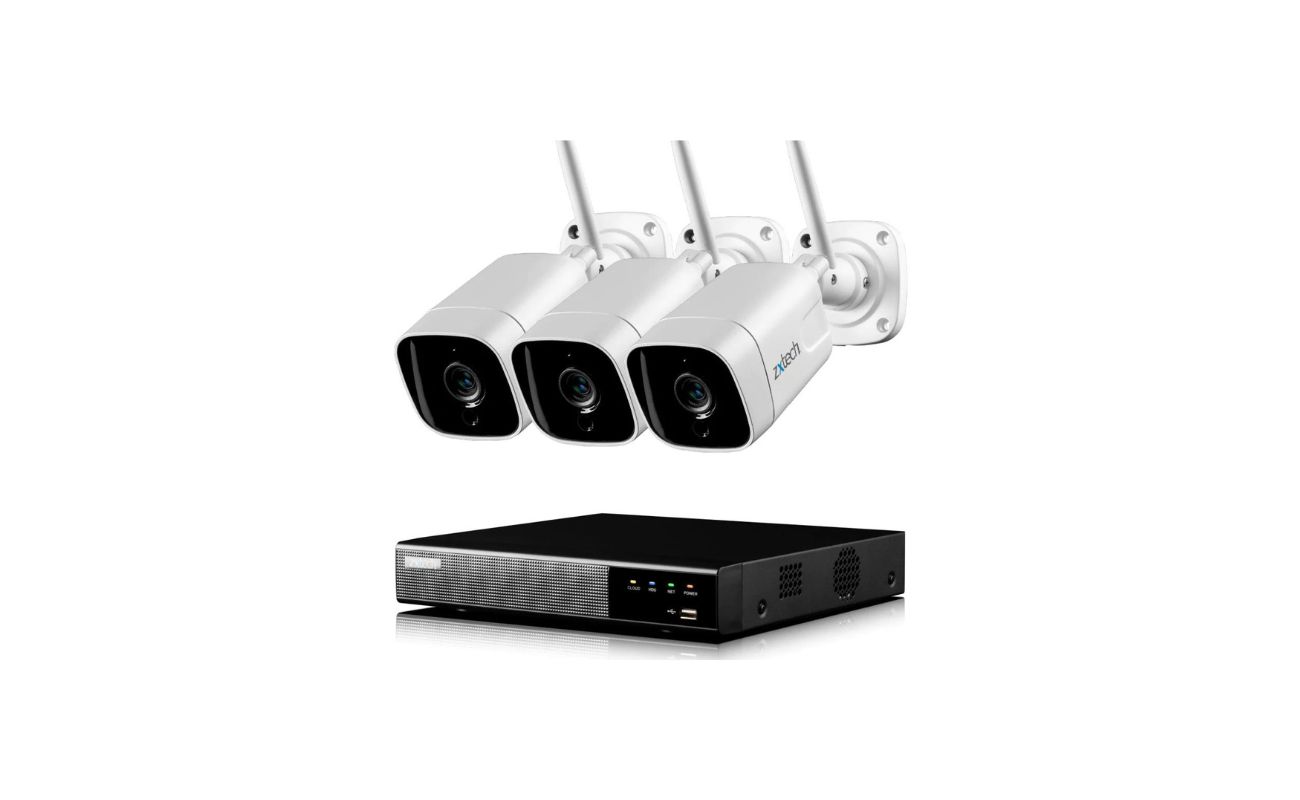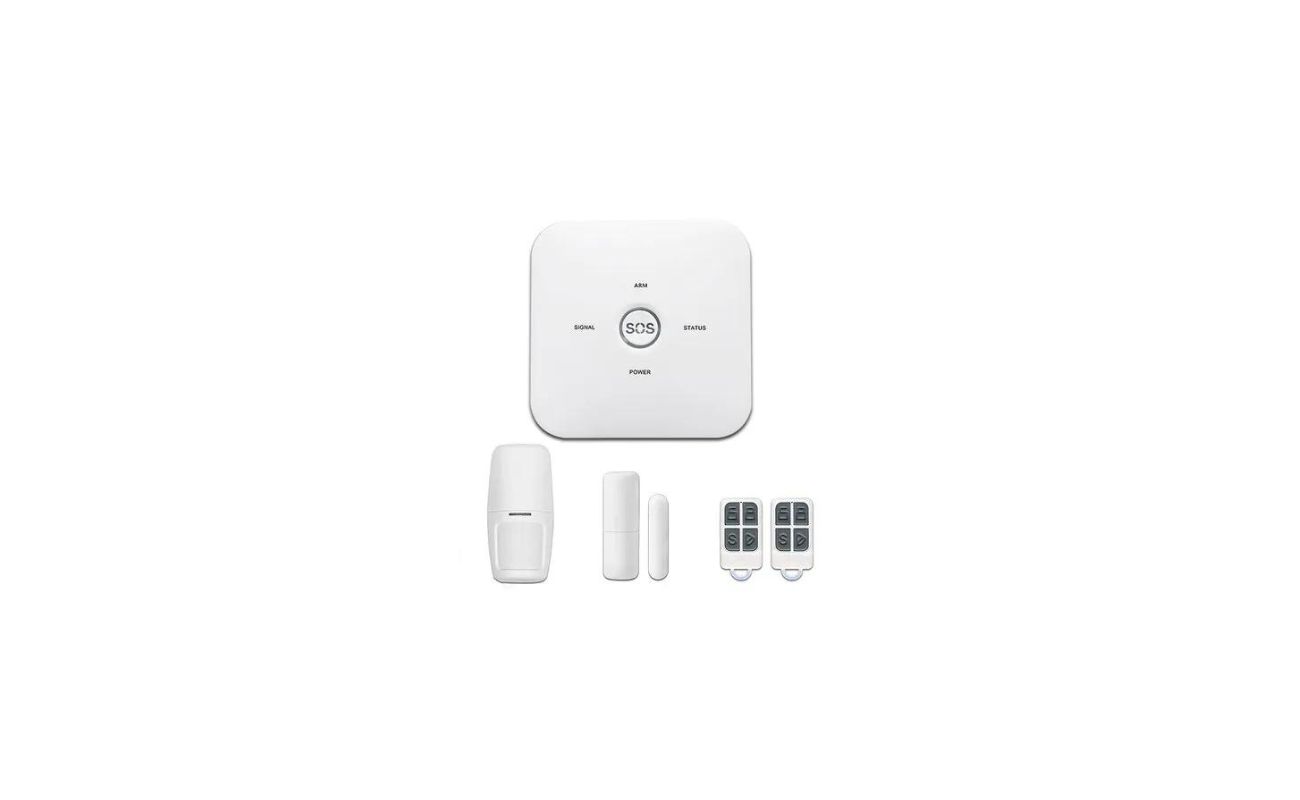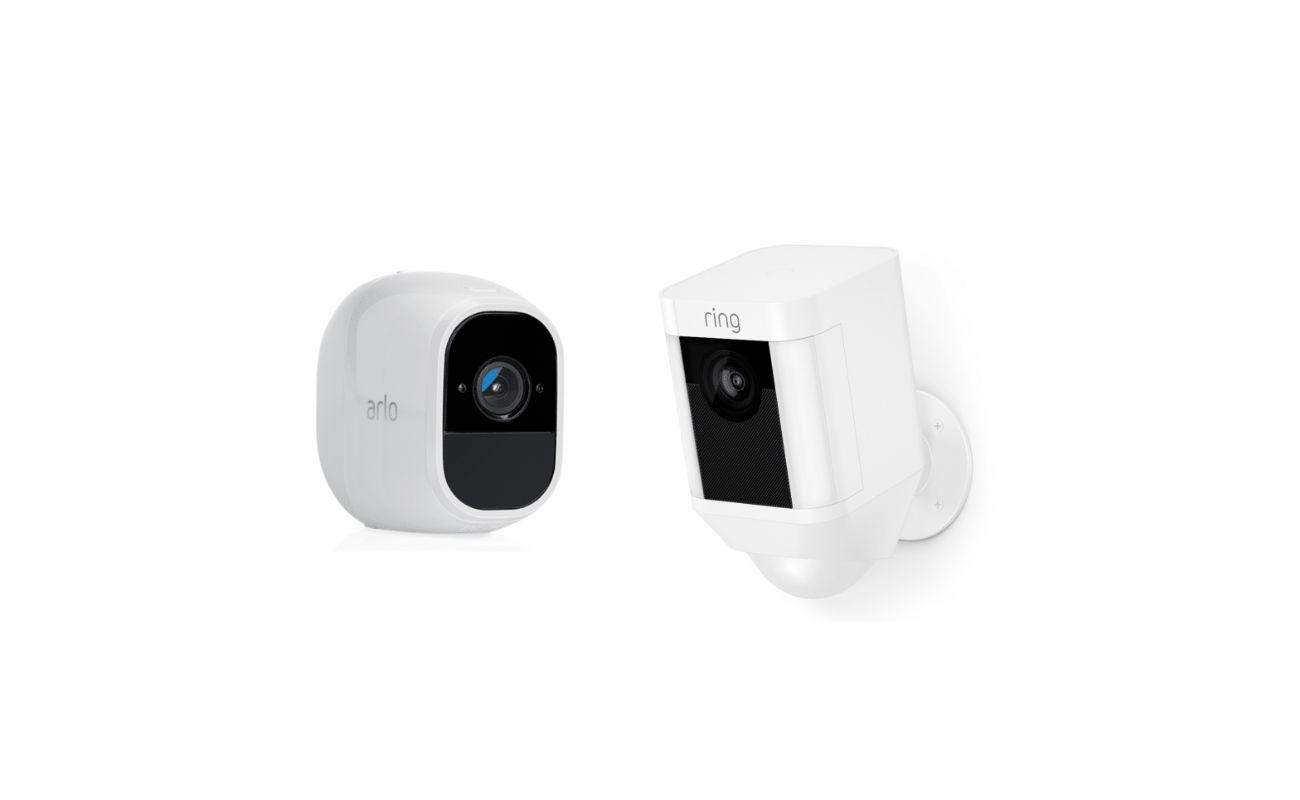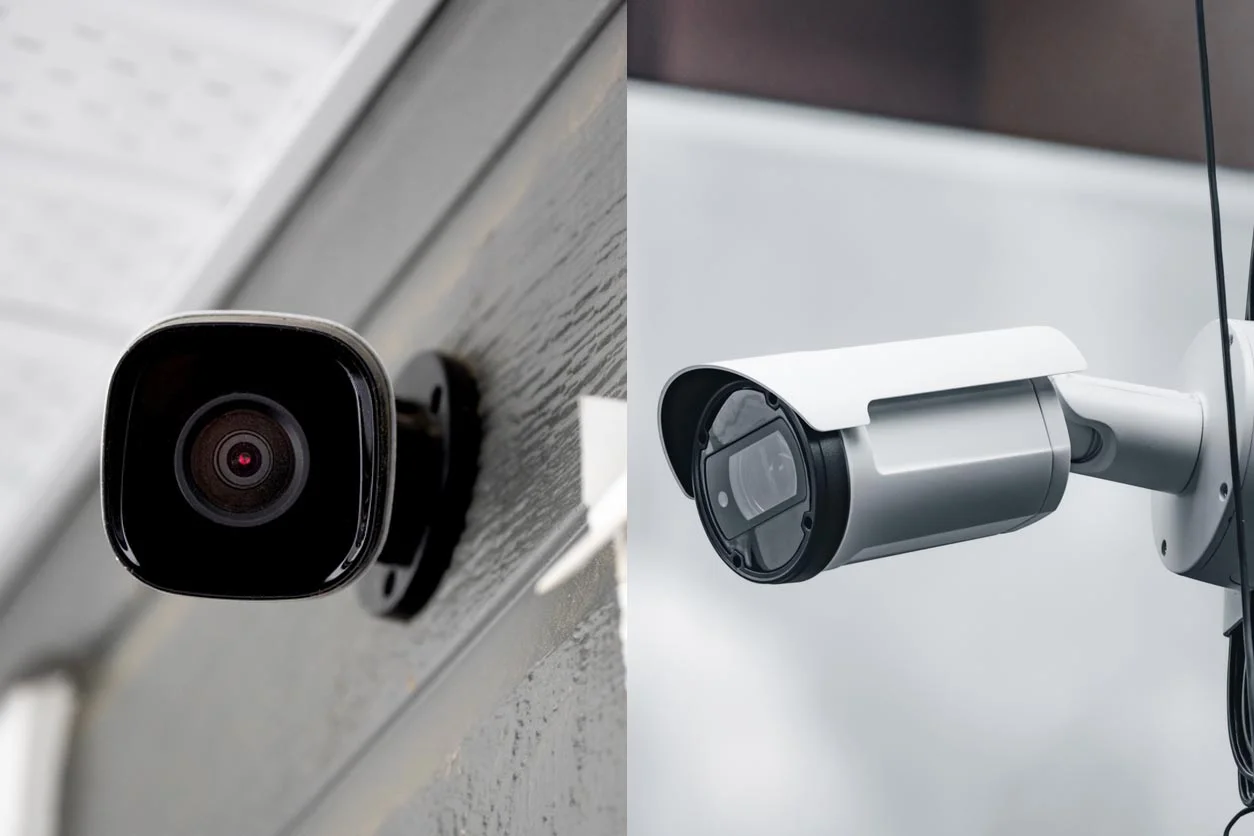Home>Home Security and Surveillance>Wireless Security Audit: Which 2 Tools Are Most Useful When Conducting An RF Assessment?


Home Security and Surveillance
Wireless Security Audit: Which 2 Tools Are Most Useful When Conducting An RF Assessment?
Modified: March 6, 2024
Get the most out of your wireless security audit with these 2 essential tools. Discover how to effectively conduct an RF assessment for home security and surveillance.
(Many of the links in this article redirect to a specific reviewed product. Your purchase of these products through affiliate links helps to generate commission for Storables.com, at no extra cost. Learn more)
Introduction
Welcome to the world of home security and surveillance! In today’s fast-paced and interconnected world, protecting our homes has become more important than ever. One of the key components of a comprehensive home security system is wireless security, which relies on a network of devices to monitor, detect, and deter potential threats.
Wireless security audits play a crucial role in ensuring the effectiveness of these systems. By conducting a thorough assessment, homeowners and security professionals can identify vulnerabilities, optimize system performance, and make informed decisions on how to enhance their home security measures. In this article, we will explore the importance of RF assessment in wireless security audits and discuss which tools are most useful in this process.
RF assessment, or radio frequency assessment, involves evaluating the wireless environment in and around a property. This assessment helps determine the strength and quality of the wireless signals, identify potential sources of interference, and optimize the placement of wireless devices for optimal coverage. Conducting an RF assessment is essential to ensure reliable and secure communication between the various components of a home security system.
When it comes to performing an RF assessment, having the right tools is of utmost importance. These tools help to accurately measure, analyze, and visualize the wireless signals, allowing for a comprehensive evaluation of the wireless environment. In this article, we will focus on two key tools that are widely used in the industry: wireless site survey software and spectrum analyzers.
Wireless site survey software is a powerful tool that enables users to plan, design, and optimize wireless networks. It provides detailed information about signal strength, coverage areas, and potential sources of interference. With the help of graphical representations and heatmaps, users can visualize the wireless coverage and pinpoint any areas that require improvement. Wireless site survey software also offers valuable features such as predictive modeling, channel optimization, and real-time monitoring of network performance.
Key Takeaways:
- Using wireless site survey software helps visualize and optimize wireless coverage, while spectrum analyzers provide a broader analysis of the radio frequency spectrum, aiding in selecting optimal frequency channels for enhanced network performance.
- Combining wireless site survey software with a spectrum analyzer offers a comprehensive approach to RF assessments, ensuring reliable and secure wireless communication by optimizing coverage, minimizing interference, and enhancing network performance.
Overview of Wireless Security Audits
Wireless security audits are comprehensive assessments of the wireless security measures in place within a residential or commercial property. These audits are conducted to identify and address any potential vulnerabilities or weaknesses in the wireless network, ensuring that the home or office remains protected from unauthorized access or intrusion.
During a wireless security audit, several key areas are examined to ensure that the wireless network is secure. These areas include:
- Network Configuration: The configuration of the wireless network is evaluated to ensure that encryption protocols, such as WPA2, are properly implemented. The audit checks if default passwords or weak encryption methods are being used, which can make the network susceptible to unauthorized access.
- Access Points: The audit assesses the placement and security settings of access points to ensure that they are strategically positioned and that both firmware and security updates are regularly applied. Access points should be configured to restrict access to authorized devices and networks.
- Wireless Clients: The wireless security audit examines the security measures implemented on all connected devices, such as laptops, smartphones, and tablets. This includes evaluating the use of strong passwords, enabling multi-factor authentication, and ensuring that all devices have the latest firmware updates.
- Encryption: The audit verifies that the wireless network is utilizing robust encryption protocols, such as WPA2-PSK, to prevent unauthorized access. Weak encryption methods, such as WEP, are discouraged due to vulnerabilities that can be exploited by attackers.
- Firewall and Intrusion Detection Systems: The effectiveness of the firewall and intrusion detection systems in detecting and blocking suspicious network activity is assessed. Any weaknesses or misconfigurations in these systems are identified and addressed during the audit.
Wireless security audits are not limited to the evaluation of infrastructure and network configurations. They also involve assessing physical security measures, such as the presence of physical barriers or perimeter defenses to prevent unauthorized physical access to the property.
By conducting a wireless security audit, homeowners and businesses can ensure that their wireless networks are properly secured and that potential vulnerabilities are addressed. Regular audits also help to identify and respond to emerging threats, ensuring that the network remains secure against the ever-evolving landscape of cybercrime.
Importance of RF Assessment in Wireless Security Audits
RF assessment, or radio frequency assessment, is a critical component of wireless security audits. It involves analyzing the wireless signals and radio frequency environment to determine the performance and overall security of the wireless network. RF assessment plays a crucial role in ensuring the effectiveness of wireless security measures. Here are some reasons why RF assessment is important:
Identifying Coverage Gaps: RF assessment helps identify areas of weak or no coverage within the wireless network. By conducting a thorough analysis of the radio frequency environment, homeowners and security professionals can determine signal strength, interference levels, and the coverage range of access points. This information allows them to strategically place access points and optimize the wireless network to ensure complete and reliable coverage throughout the property.
Detecting Interference Sources: Interference from other devices or wireless networks can degrade the performance and security of a wireless network. RF assessment helps identify these sources of interference, such as microwave ovens, cordless phones, or neighboring Wi-Fi networks. By detecting and addressing these interference sources, the wireless network can operate at optimal performance and reduce the risk of unauthorized access or data breaches.
Optimizing Channel Selection: Wireless networks operate on different channels within the radio frequency spectrum. RF assessment helps in determining the channels with the least interference and allows for strategic channel selection. By avoiding crowded or congested channels, the wireless network can maintain a stable and secure connection, minimizing the risk of signal interference and unauthorized access.
Enhancing Network Security: RF assessment contributes to enhancing the overall security of the wireless network. By identifying coverage gaps, optimizing channel selection, and detecting interference sources, homeowners and security professionals can ensure that the wireless network is secure and performs optimally. This reduces the risk of unauthorized access and strengthens the protection of sensitive information transmitted over the network.
Ensuring Regulatory Compliance: Many countries have regulations and standards regarding wireless network security. RF assessment helps ensure compliance with these regulations by evaluating the network for vulnerabilities, such as weak encryption, unauthorized access points, or improper network configurations. By addressing these vulnerabilities, homeowners and organizations can avoid potential legal and regulatory issues.
Overall, RF assessment is essential in wireless security audits to optimize the performance, reliability, and security of the wireless network. By conducting a thorough analysis of the radio frequency environment, homeowners and security professionals can identify vulnerabilities, improve network coverage, and enhance the overall security posture of their wireless networks.
Choosing the Right Tools for RF Assessment
When it comes to conducting RF assessments for wireless security audits, having the right tools is crucial. These tools enable homeowners and security professionals to accurately measure, analyze, and optimize the wireless signals and radio frequency environment. Let’s explore two of the most useful tools for RF assessment:
Tool 1: Wireless Site Survey Software
Wireless site survey software is a powerful tool specifically designed for RF assessments. It provides detailed information about the wireless network, including signal strength, coverage areas, and potential sources of interference.
Some key features and benefits of wireless site survey software include:
- Graphical representations and heatmaps: This allows users to visualize the wireless coverage throughout the property and identify any coverage gaps.
- Predictive modeling: It helps in planning and designing the wireless network by simulating the coverage based on specific parameters and variables.
- Channel optimization: The software suggests optimal channel selection to minimize interference and maximize network performance.
- Real-time monitoring: Users can monitor the performance of the wireless network in real-time, allowing for quick detection of any issues or anomalies.
To conduct an RF assessment using wireless site survey software, follow these steps:
- Import a floor plan or create a virtual representation of the property.
- Place virtual access points on the floor plan to simulate the coverage.
- Perform a survey using a wireless device and gather data on signal strength and coverage.
- Analyze the data to identify coverage gaps, sources of interference, and other issues.
- Make adjustments to the virtual access points or network settings to optimize coverage and minimize interference.
Tool 2: Spectrum Analyzer
A spectrum analyzer is another essential tool for RF assessment. It allows users to analyze the radio frequency spectrum and detect signals across different frequencies.
Some key features and benefits of a spectrum analyzer include:
- Spectrum visualization: It provides a graphical representation of the radio frequency spectrum, making it easy to detect and analyze signals.
- Signal strength measurement: Users can measure the strength of signals across different frequencies and identify potential sources of interference.
- Interference identification: The spectrum analyzer helps in identifying and locating sources of interference, such as neighboring wireless networks or electrical devices.
- Frequency coordination: Users can optimize the frequency allocation for wireless devices to minimize interference and improve overall network performance.
To conduct an RF assessment using a spectrum analyzer, follow these steps:
- Set up the spectrum analyzer and configure the frequency range and resolution.
- Scan the radio frequency spectrum to identify signals and sources of interference.
- Analyze the spectrum data to identify potential issues, signal overlaps, or crowded frequency bands.
- Make adjustments to the wireless network settings or device placements to optimize performance based on the spectrum analysis.
Choosing the right tools for RF assessment depends on the specific needs and requirements of the wireless network. Wireless site survey software provides a detailed visual representation of the network coverage, while a spectrum analyzer focuses more on analyzing the radio frequency spectrum. By utilizing these tools effectively, homeowners and security professionals can ensure a thorough and reliable RF assessment for their wireless security audits.
Tool 1: Wireless Site Survey Software
Wireless site survey software is a powerful tool that plays a crucial role in conducting RF assessments for wireless security audits. This software is designed specifically to plan, design, and optimize wireless networks by providing detailed information about signal strength, coverage areas, and potential sources of interference. Let’s explore some of the key features and benefits of using wireless site survey software:
- Graphical Representations and Heatmaps: One of the major advantages of wireless site survey software is its ability to provide graphical representations and heatmaps. These visualizations allow users to easily visualize the wireless coverage throughout the property and identify any coverage gaps. By analyzing the heatmaps, users can efficiently determine the areas that require additional access points or signal amplification.
- Predictive Modeling: Wireless site survey software often includes a predictive modeling feature. This feature helps in planning and designing the wireless network by simulating the coverage based on specific parameters and variables. Users can input the floor plan and other relevant details, and the software will generate a visualization of how the wireless signals will propagate in the environment. This allows for accurate planning, ensuring optimal coverage and performance.
- Channel Optimization: Another valuable feature of wireless site survey software is its ability to suggest optimal channel selection. By analyzing the wireless environment and detecting the presence of other networks or interference sources, the software can recommend the least crowded channels to minimize interference and maximize network performance. This feature is particularly beneficial in dense urban areas or office environments where multiple networks are present.
- Real-Time Monitoring: Wireless site survey software often offers real-time monitoring capabilities. With this feature, users can continuously monitor the performance of the wireless network, detecting any issues or anomalies as they occur. Real-time monitoring allows for proactive network management, ensuring that any performance degradation or security concerns are addressed promptly.
To conduct an RF assessment using wireless site survey software, follow these steps:
- Import a Floor Plan or Create a Virtual Representation: Start by importing a floor plan of the property or creating a virtual representation. This will serve as the basis for planning and analyzing the wireless coverage.
- Place Virtual Access Points: Using the software, place virtual access points on the floor plan to simulate the wireless coverage. This step allows users to visualize how the signals will propagate in the environment.
- Perform a Survey: Using a wireless device equipped with the software, conduct a survey of the property. The software will collect data on signal strength, coverage areas, and potential interference sources.
- Analyze the Data: Analyze the data collected during the survey to identify coverage gaps, sources of interference, and other issues. This analysis will help in optimizing the wireless network for improved performance and security.
- Make Adjustments: Based on the analysis, make necessary adjustments to the virtual access points or network settings. This may involve repositioning access points, adjusting power levels, or fine-tuning the channel selection to optimize coverage and minimize interference.
Wireless site survey software is a vital tool for conducting RF assessments in wireless security audits. It provides users with valuable insights into the wireless environment, allowing for informed decisions on optimizing the network for better coverage, performance, and security.
Read more: Which Wireless Security Protocol Uses AES
– Features and Benefits
Wireless site survey software offers a wide range of features and benefits that contribute to a thorough and accurate RF assessment. Let’s explore some of the key features and benefits of using wireless site survey software:
- Graphical Representations and Heatmaps: One of the standout features of wireless site survey software is its ability to provide graphical representations and heatmaps. These visualizations allow users to easily and intuitively understand the wireless coverage throughout the property. By analyzing the heatmaps, users can identify areas of weak or no coverage, address signal strength issues, and strategically place access points to ensure optimal coverage.
- Predictive Modeling: Wireless site survey software often includes a predictive modeling feature that assists in planning and designing wireless networks. By inputting the floor plan and other relevant details, the software can simulate the wireless coverage and predict how the signals will propagate in the environment. This helps in making informed decisions about access point placement, antenna selection, and other network configurations to achieve the desired coverage and performance goals.
- Channel Optimization: In crowded wireless environments, channel optimization becomes crucial to minimize interference and maximize network performance. Wireless site survey software can automatically scan the surrounding wireless networks and recommend the least congested channels. By leveraging this feature, users can optimize channel allocation, reduce signal interference, and enhance the overall stability and throughput of their wireless networks.
- Real-time Monitoring: Real-time monitoring capabilities offered by wireless site survey software enable users to monitor the performance of their wireless networks in real-time. This allows for proactive management and quick detection of any network issues such as low signal strength, channel congestion, or unauthorized access points. With real-time monitoring, users can take immediate action to resolve problems and ensure the smooth functioning of their wireless security systems.
- Reporting and Documentation: Wireless site survey software typically includes reporting and documentation features that allow users to generate detailed reports of the RF assessment results. These reports provide valuable insights into signal strength, coverage areas, and potential sources of interference. They serve as a record of the wireless network’s performance and assist in tracking changes over time. The documentation feature helps create comprehensive network documentation, making it easier for users to manage, troubleshoot, and upgrade their wireless networks in the future.
With these features and benefits, wireless site survey software empowers users to make informed decisions and optimize the performance, coverage, and security of their wireless networks. It simplifies the RF assessment process, providing valuable insights into the wireless environment and helping users address any weaknesses or vulnerabilities in their wireless security systems. By utilizing the capabilities of wireless site survey software, homeowners and security professionals can ensure that their wireless networks perform optimally and provide reliable protection against potential threats.
– Steps to Conduct RF Assessment Using Wireless Site Survey Software
Conducting an RF assessment using wireless site survey software is a systematic process that involves several key steps. Here are the steps to follow when conducting an RF assessment using wireless site survey software:
- Import a Floor Plan or Create a Virtual Representation: Start by importing a floor plan of the property into the software or create a virtual representation of the environment. This will serve as the basis for planning and analyzing the wireless coverage.
- Place Virtual Access Points: Using the wireless site survey software, place virtual access points on the floor plan to simulate the wireless coverage. These virtual access points represent the actual physical access points that will be deployed in the network. By strategically placing them, you can visualize how the signals will propagate throughout the property.
- Perform a Survey: With the virtual access points set up, it’s time to conduct a survey using a wireless device equipped with the wireless site survey software. Move around the property, collecting data on signal strength, coverage areas, and potential sources of interference. The software will collect the necessary data to analyze the wireless environment.
- Analyze the Data: Once the survey is complete, it’s time to analyze the data collected by the software. Utilize the graphical representations and heatmaps provided by the software to identify coverage gaps, areas of weak signal strength, and potential sources of interference. The analysis will help you understand the current state of the wireless network and pinpoint any issues that need to be addressed.
- Make Adjustments: Based on the analysis of the data, make necessary adjustments to the virtual access points or network settings. This may involve repositioning access points to provide better coverage in areas with weak signals, adjusting the power levels to optimize signal strength, or fine-tuning the channel selection to minimize interference from other networks. The goal is to optimize the wireless network’s performance and coverage.
- Generate Reports: After making the necessary adjustments, generate reports using the wireless site survey software. These reports will provide a comprehensive overview of the RF assessment, including details on signal strength, coverage areas, and potential sources of interference. The reports serve as a valuable reference for future network management and troubleshooting.
- Periodic Monitoring and Updates: Wireless networks are dynamic in nature, with changes in the surrounding environment and the addition of new devices. It’s important to regularly monitor the wireless network and perform updates using the wireless site survey software. This will help ensure that the network continues to perform optimally and maintain reliable coverage over time.
By following these steps, you can efficiently conduct an RF assessment using wireless site survey software. The software provides valuable insights into the wireless environment, allowing you to make informed decisions on optimizing the network’s coverage, performance, and security. With the ability to plan, analyze, and fine-tune your wireless network, you can ensure that it operates at its best to provide reliable protection for your home or business.
Tool 2: Spectrum Analyzer
A spectrum analyzer is a powerful tool used in RF assessments for wireless security audits. It is designed to analyze and visualize the radio frequency spectrum, providing valuable insights into signal strength, frequency bands, and potential sources of interference. Let’s explore the features and benefits of using a spectrum analyzer for RF assessment:
- Spectrum Visualization: One of the main features of a spectrum analyzer is its ability to provide a graphical representation of the radio frequency spectrum. This visual representation allows users to easily understand the distribution of signals across different frequency bands. It helps in identifying potential sources of interference and gaining a comprehensive view of the wireless environment.
- Signal Strength Measurement: Spectrum analyzers enable users to accurately measure and analyze the signal strength of wireless devices and networks. By examining the signal strength at different frequencies, users can determine the coverage range and assess the overall performance of the wireless network. This information is crucial in identifying areas of weak signal strength and optimizing the network configuration.
- Interference Identification: Interference from other devices or wireless networks can significantly impact the performance of a wireless network. Spectrum analyzers help in detecting and identifying potential sources of interference, such as neighboring Wi-Fi networks, microwave ovens, cordless phones, or Bluetooth devices. By pinpointing these sources, users can take appropriate measures to minimize interference and improve network performance.
- Frequency Coordination: In crowded wireless environments, frequency coordination is essential to avoid congestion and optimize network performance. A spectrum analyzer assists in identifying and selecting the least crowded frequency channels for wireless devices. By leveraging this capability, users can minimize interference and maximize network throughput, ensuring smooth and reliable wireless communication.
To conduct an RF assessment using a spectrum analyzer, follow these steps:
- Set Up the Spectrum Analyzer: Start by setting up the spectrum analyzer and configuring the frequency range and resolution to suit your requirements. The spectrum analyzer will scan and analyze the radio frequency spectrum within the specified range.
- Scan the Radio Frequency Spectrum: Initiate the spectrum analysis by scanning the radio frequency spectrum within the configured range. The spectrum analyzer will detect the presence of signals across different frequency bands and provide visual representations of the spectrum distribution.
- Analyze the Spectrum Data: Analyze the data provided by the spectrum analyzer to identify potential issues and sources of interference. Look for crowded frequency bands, overlapping signals, or unusually high signal levels that may indicate interference. This analysis will help in understanding the current state of the wireless environment and making informed decisions for optimization.
- Make Adjustments: Based on the analysis, make necessary adjustments to the wireless network configuration or device placements. This may involve changing the channel selection, adjusting the antenna positions, or repositioning access points to avoid interference and improve network performance.
Spectrum analyzers are powerful tools that provide valuable insights into the radio frequency environment. By utilizing a spectrum analyzer during RF assessments, homeowners and security professionals can optimize the wireless network, mitigate interference, and ensure reliable and secure wireless communication for their home or business.
Read more: Which Wireless Security Protocol Uses AES
– Features and Benefits
A spectrum analyzer offers a range of features and benefits that make it an invaluable tool for RF assessment in wireless security audits. Let’s explore some of the key features and benefits of using a spectrum analyzer:
- Spectrum Visualization: One of the standout features of a spectrum analyzer is its ability to provide graphical representations of the radio frequency spectrum. This visualization allows users to easily understand the distribution of signals across different frequencies and identify potential sources of interference. The visual display provides a comprehensive view of the wireless environment, aiding in efficient analysis and optimization of the network.
- Signal Strength Measurement: Spectrum analyzers enable precise measurement and analysis of signal strength across the radio frequency spectrum. Users can accurately assess the coverage range of the wireless network, identify weak signal areas, and make adjustments to optimize performance. This feature allows for a thorough evaluation of signal strength, ensuring reliable wireless communication and enhancing the overall network performance.
- Interference Identification: Interference from other devices or wireless networks can significantly impact the performance of a wireless network. Spectrum analyzers help in detecting and identifying potential sources of interference, such as neighboring Wi-Fi networks, microwave ovens, or cordless phones. By pinpointing these sources, users can strategically adjust network settings, change channel allocations, or implement shielding measures to mitigate interference and improve network stability.
- Frequency Coordination: In congested wireless environments, selecting the right frequency channels is crucial to minimize interference and optimize network performance. Spectrum analyzers assist in identifying the least crowded frequency channels for wireless devices. This feature allows users to select optimal frequencies, reduce signal overlap, and maximize the overall network capacity and throughput.
- Real-Time Monitoring: Spectrum analyzers often provide real-time monitoring capabilities, allowing users to continuously monitor the radio frequency spectrum. This feature enables quick detection of any changes or anomalies in the wireless environment. Real-time monitoring facilitates proactive network management, ensuring prompt response to interference or signal strength issues and maintaining reliable and secure wireless communication.
By utilizing the features and benefits of a spectrum analyzer, users can gain valuable insights into the radio frequency environment, optimize network performance, and enhance security measures. The ability to visualize and analyze the spectrum distribution aids in identifying interference sources, selecting optimal frequency channels, and adjusting network configurations for improved coverage and reliability.
Read more: Which Wireless Security For Linksys
– Steps to Conduct RF Assessment Using a Spectrum Analyzer
Conducting an RF assessment using a spectrum analyzer is a systematic process that involves several key steps. Here are the steps to follow when conducting an RF assessment using a spectrum analyzer:
- Set Up the Spectrum Analyzer: Begin by setting up the spectrum analyzer and configuring the desired frequency range and resolution. This allows the device to scan and analyze the radio frequency spectrum within the specified range.
- Scan the Radio Frequency Spectrum: Initiate the scan on the spectrum analyzer to examine the radio frequency spectrum within the configured range. The spectrum analyzer will detect and identify signals across different frequencies and display them on the device’s graphical interface.
- Analyze the Spectrum Data: Analyze the data provided by the spectrum analyzer to identify potential issues and sources of interference. Look for crowded frequency bands, strong signals that may indicate nearby networks, or unusual patterns that may suggest interference sources. This analysis enables a deeper understanding of the radio frequency environment and helps in identifying areas for improvement.
- Identify Sources of Interference: In the analyzed spectrum data, focus on identifying potential sources of interference. These may include neighboring Wi-Fi networks, microwave ovens, cordless phones, or other electronic devices. By pinpointing these sources, you can determine the impact they have on the network’s performance.
- Make Adjustments: Based on the analysis and identification of interference sources, make the necessary adjustments to optimize the wireless network. This may involve adjusting the channel selection, changing antenna positions, or repositioning access points to minimize interference and maximize network performance.
- Monitor and Repeat: After making adjustments, continually monitor the radio frequency spectrum using the spectrum analyzer. This allows you to track changes and ensures that the network remains optimized. Regular monitoring also helps in quickly identifying any new interference sources or performance issues that may arise.
Conducting an RF assessment using a spectrum analyzer provides valuable insights into the radio frequency environment, allowing for the identification and mitigation of potential sources of interference. By following these steps, you can optimize the wireless network, enhance performance, and ensure reliable and secure wireless communication within your home or business.
Comparison of Wireless Site Survey Software and Spectrum Analyzer
When it comes to conducting RF assessments in wireless security audits, two key tools that are often utilized are wireless site survey software and spectrum analyzers. While both tools serve the purpose of analyzing wireless signals and optimizing network performance, there are several differences between them. Let’s compare wireless site survey software and spectrum analyzers based on various factors:
Factors to Consider:
Data Visualization: Wireless site survey software provides graphical representations and heatmaps, offering a visual view of the wireless coverage throughout the property. This helps users identify coverage gaps and optimize access point placements. On the other hand, spectrum analyzers provide graphical representations of the radio frequency spectrum, allowing users to visualize signal distribution across different frequencies and identify interference sources.
Real-time Monitoring: Wireless site survey software often includes real-time monitoring capabilities, allowing users to continuously monitor the performance of the wireless network. This feature enables prompt detection of any issues or anomalies in network performance. Spectrum analyzers, on the other hand, provide real-time monitoring of the radio frequency spectrum, helping users identify and address interference sources in real-time.
Channel Optimization: Wireless site survey software offers channel optimization features, analyzing the wireless environment and suggesting optimal channel selection to minimize interference. This feature is valuable in crowded wireless environments where multiple networks are present. Spectrum analyzers, however, help users analyze the radio frequency spectrum, assisting in selecting the least crowded frequency channels and optimizing network performance.
Signal Strength Measurement: Wireless site survey software allows users to measure and analyze signal strength across the wireless network. This feature helps in optimizing coverage and addressing areas of weak signal strength. Spectrum analyzers also measure signal strength but focus on providing a comprehensive view of the signal distribution across different frequencies.
Pros and Cons:
Wireless Site Survey Software:
- Pros:
- Offers graphical representations and heatmaps for visualizing wireless coverage.
- Provides real-time monitoring capabilities for proactive network management.
- Assists in channel optimization to minimize interference and maximize network performance.
- Cons:
- May require additional equipment or software for conducting surveys.
- Focuses more on optimizing coverage and access point placements rather than analyzing the entire radio frequency spectrum.
Spectrum Analyzer:
- Pros:
- Provides a graphical representation of the radio frequency spectrum for analyzing signal distribution.
- Enables real-time monitoring of the radio frequency spectrum to detect interference sources.
- Aids in selecting optimal frequency channels for maximizing network performance.
- Cons:
- Does not offer heatmaps or visual representations of wireless coverage like wireless site survey software.
- Focuses more on analyzing the entire radio frequency spectrum rather than optimizing access point placements.
Ultimately, the choice between wireless site survey software and spectrum analyzers depends on the specific requirements and goals of the RF assessment. Wireless site survey software is more focused on optimizing coverage and access point placements, while spectrum analyzers provide a broader view of the radio frequency spectrum and identify interference sources. Combining both tools can provide a comprehensive approach to RF assessment, ensuring optimized network performance and reliable wireless communication in home security systems.
– Factors to Consider
When it comes to conducting RF assessments in wireless security audits, several factors should be considered when choosing between wireless site survey software and spectrum analyzers. Let’s explore these factors in more detail:
Data Visualization: Wireless site survey software offers graphical representations and heatmaps, providing a visual view of the wireless coverage throughout the property. This allows users to easily identify coverage gaps and optimize access point placements. On the other hand, spectrum analyzers provide graphical representations of the radio frequency spectrum, helping users visualize signal distribution across different frequencies and identify potential interference sources. Consider which type of data visualization is more beneficial for your RF assessment needs.
Real-time Monitoring: Wireless site survey software often includes real-time monitoring capabilities, allowing users to continuously monitor the performance of the wireless network. This feature enables prompt detection of any issues or anomalies in network performance, facilitating proactive network management. Spectrum analyzers also provide real-time monitoring of the radio frequency spectrum, assisting users in identifying and addressing interference sources in real-time. Consider the importance of real-time monitoring in your RF assessment process.
Channel Optimization: Wireless site survey software offers channel optimization features, analyzing the wireless environment and suggesting optimal channel selection to minimize interference. This feature is particularly valuable in crowded wireless environments where there are multiple networks present. Spectrum analyzers, on the other hand, help users analyze the radio frequency spectrum, assisting in selecting the least crowded frequency channels for optimal network performance. Consider the level of channel optimization that is required for your wireless network.
Signal Strength Measurement: Wireless site survey software allows users to measure and analyze signal strength across the wireless network. This feature helps in optimizing coverage and addressing areas of weak signal strength. Spectrum analyzers also measure signal strength, but their primary focus is providing a comprehensive view of the signal distribution across different frequencies. Consider whether signal strength measurement or a broader analysis of the signal distribution is more important for your RF assessment requirements.
Overall Goals and Requirements: Ultimately, the choice between wireless site survey software and spectrum analyzers depends on the overall goals and requirements of your RF assessment. Consider the specific needs of your wireless network and the extent of coverage optimization and interference mitigation required. Assess whether a more visual approach, such as wireless site survey software, or a holistic analysis of the radio frequency spectrum, provided by spectrum analyzers, aligns better with your objectives.
By carefully considering these factors, you can make an informed decision on whether wireless site survey software or spectrum analyzers are the most suitable tool for your RF assessment in a wireless security audit. Both tools offer unique capabilities that can contribute to a comprehensive and effective evaluation of your wireless network’s performance and security.
– Pros and Cons
When choosing between wireless site survey software and spectrum analyzers for RF assessments in wireless security audits, it is important to weigh their respective pros and cons. Let’s explore the advantages and disadvantages of each tool:
Wireless Site Survey Software:
- Pros:
- Graphical representations and heatmaps provide a visual view of wireless coverage, aiding in identifying coverage gaps and optimizing access point placements.
- Real-time monitoring capabilities enable proactive network management, allowing for prompt detection of performance issues or anomalies.
- Channel optimization features optimize frequency allocations, minimizing interference and maximizing network performance.
- Offers signal strength measurement, assisting in optimizing coverage and addressing areas of weak signal strength.
- Cons:
- May require additional equipment or software for conducting surveys, potentially adding to the overall cost.
- Focuses more on optimizing coverage and access point placements rather than analyzing the entire radio frequency spectrum.
Spectrum Analyzer:
- Pros:
- Provides graphical representations of the radio frequency spectrum, aiding in the visualization of signal distribution and identification of potential interference sources.
- Real-time monitoring capabilities allow for continuous monitoring of the radio frequency spectrum, facilitating prompt detection and mitigation of interference sources.
- Assists in selecting optimal frequency channels to optimize network performance by minimizing interference.
- Cons:
- Does not provide heatmaps or visual representations of wireless coverage like wireless site survey software.
- Focuses more on analyzing the entire radio frequency spectrum rather than optimizing access point placements.
Consider these pros and cons when deciding between wireless site survey software and spectrum analyzers for your RF assessments. If you prioritize visual representations of coverage and access point optimization, wireless site survey software may be more suitable. On the other hand, if a broader analysis of the radio frequency spectrum and the identification of interference sources are crucial, a spectrum analyzer might be the better choice.
Keep in mind that combining these tools can provide a comprehensive approach to RF assessments in wireless security audits. Utilizing both wireless site survey software and a spectrum analyzer can enable you to optimize coverage and access point placements while mitigating interference and ensuring optimal network performance and security.
Conclusion
When it comes to conducting RF assessments in wireless security audits, the choice between wireless site survey software and spectrum analyzers depends on the specific needs and goals of the assessment. Both tools offer unique features and benefits that contribute to the optimization of network performance and security.
Wireless site survey software provides graphical representations, heatmaps, and real-time monitoring capabilities, allowing users to visualize and optimize wireless coverage. It focuses on optimizing access point placements and channel allocation, making it beneficial for achieving comprehensive coverage and minimizing interference.
Spectrum analyzers, on the other hand, provide a broader analysis of the radio frequency spectrum, helping users visualize signal distribution and identify potential interference sources. They assist in selecting optimal frequency channels to enhance network performance and mitigate interference issues.
Ultimately, the choice between wireless site survey software and spectrum analyzers depends on factors such as data visualization preferences, the importance of real-time monitoring, the level of channel optimization required, and the need for signal strength measurement. It is essential to consider the pros and cons of each tool and align them with the specific requirements of your wireless network and RF assessment.
Combining wireless site survey software with a spectrum analyzer can provide a comprehensive approach to RF assessments in wireless security audits. This allows for the optimization of coverage and access point placements while mitigating interference and ensuring optimal network performance and security. By leveraging the strengths of both tools, homeowners and security professionals can achieve reliable and secure wireless communication within their home or business.
In conclusion, selecting the right tools for RF assessments is crucial in ensuring the effectiveness of wireless security measures. By conducting thorough assessments and making informed decisions based on the insights provided by wireless site survey software and spectrum analyzers, homeowners and security professionals can optimize the performance, coverage, and security of their wireless networks, strengthening their overall home security system.
Frequently Asked Questions about Wireless Security Audit: Which 2 Tools Are Most Useful When Conducting An RF Assessment?
Was this page helpful?
At Storables.com, we guarantee accurate and reliable information. Our content, validated by Expert Board Contributors, is crafted following stringent Editorial Policies. We're committed to providing you with well-researched, expert-backed insights for all your informational needs.



